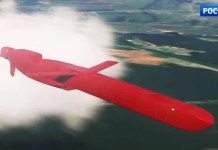The Asia Power Index 2020 ranked India as the fourth most powerful country in Asia, trailing after the US, China and Japan. According to Lowy Institute, a Sydney based independent think tank that is behind the Asia Power Index, China and the US are termed as “superpowers” while India stands as a “middle power.”
Power Index: US The Most Dominant Military Power, China The Financial Super-Power
In the study, the Index ranks a total of 26 countries based on factors including economic capability, military capability, resilience, diplomatic influence and cultural influence.
According to the Index, while India’s overall score declined by 1.3 points compared to 2019, New Delhi saw its diplomatic influence ranking improve by two places, overtaking South Korea and Russia, “despite a loss of points due to the poor international perception of its handling of the pandemic.”
Power Index: US The Most Dominant Military Power, China The Financial Super-Power
“The decision to withdraw from the Regional Comprehensive Economic Partnership has been damaging in this regard. Meanwhile, China’s economic clout continues to grow in India’s near abroad — including in Nepal where Beijing has displaced New Delhi as the primary foreign investor,” said the report.
However, New Delhi is up by one place in defence networks due to increased cooperation through the Quadrilateral grouping that includes – India, the US, Australia and Japan. India’s decision to withdraw from the Regional Comprehensive Economic Partnership (RCEP) has affected its economic relationships negatively, said the report.

On the other hand, China’s economic clout continues to grow in India’s near abroad — including in Nepal where Beijing has displaced New Delhi as the primary foreign investor.
With India and China involved in a border conflict, tensions have soared between the nuclear-armed neighbours despite continuous efforts to disengage.
“Asia Power Index might serve to cooling down Indians’ overheating nationalist sentiment. Since the border tensions erupted in May, strategists in India insisted that the Indian army is capable of coping with the “threat from China,” wrote Xie Chao, an assistant professor at the Institute for International and Area Studies, Tsinghua University, in a Chinese state-owned tabloid, Global Times (GT).
“The Modi administration also caters to the sentiment and was leaning on Western resources and influences to contain China, but only getting some expensive arms sales and insignificant lip-service support,” he added.
Chao emphasised that India’s gains in the defence network are consistent with the policy stands of the ruling Bharatiya Janata Party in dealing with differences with its neighbouring countries.
“India’s tensions with China and Pakistan have been escalating, and it has been engaging in spats with Bangladesh and Nepal. Anticipating backlashes from its neighbours, India has enhanced international ties for arms buildup.”
He slammed the Modi government for making China as its “imaginary rival” to boost India’s International status. He pointed out that the report classifies India as a middle power, short of the major power threshold of 40 points in 2020, while China is labelled as a “superpower” along with the US.
“The report stated that India will only reach 40 percent of China’s economic output by 2030 – down from the 50 percent forecast in the 2019 Asia Power Index. The report also said India’s rise as a superpower “will be a multi-decade effort” if it ever happens,” said Chao.
He emphasised, indicating the “power gap” between India and China, that this prediction is against what some “Western media outlets” have said claiming India as a rising power that can be equated with China.




